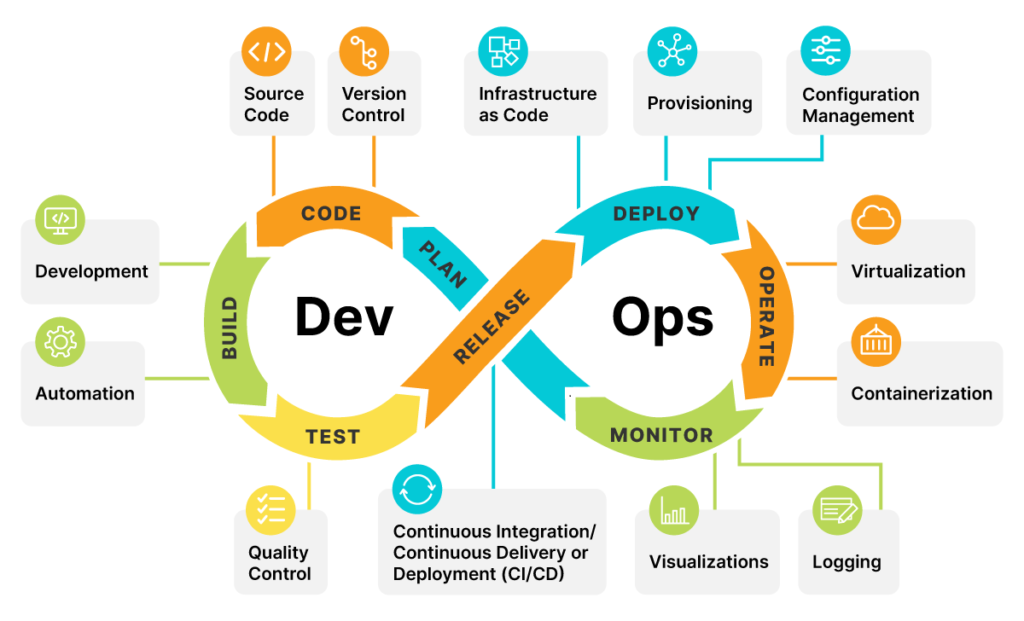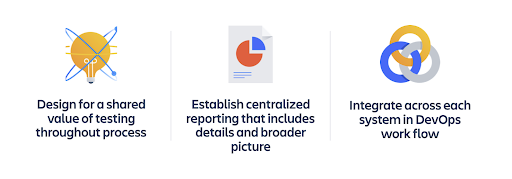
The majority of categories need various tools from several retailers to help them do their work and achieve their very particular purposes. Yet, as our 2020 DevOps Trends Survey partner with CITE Research discovered, several category sectors experience challenges implementing the DevOps. So, from both the cultural and software technical shift that’s needed, as well as it can be confused just how to get going.
Our own Ian Buchanan announced in an event on October 21st,’s of 2020– fundamental principle remedies that the engineer and DevOps professional event– hosted at a webinar titled “Step Up Your DevOps Game with 4 Key DevOps Integrations.” He has shared how our companion community assists power an integrated powerful DevOps toolchain and its worth to our retailer.
Drawing from his experience with our most notable partners and retailer clients, in addition to client surveys and understandings of the retailers, Ian introduced the four crucial DevOps methods to think about as you relocate with your DevOps journey. With the hold up from our very close companion from Snyk, SmartBear, Dynatrace, and LaunchDarkly, we also provided pointers on how to approach each of these techniques in detail.
DevOps is one of the most trendings in the industry because it fastens the software development and operation process. To learn more, you can enrol for this Post Graduate Program in DevOps certification in collaboration with Purdue University.
Agile screening
Traditionally, screening is driven by the QA team, taking place just at the end of a task. However, with the change to agile and DevOps, groups strive to include screening via the entire growth process– from preliminary style with combination, implementation, and software program distribution– causing lowered lead times and faster insect detection. With agile testing, exam inspections are developed as part of the requirements, and auto industrialization enables the testing to be run on the on-demand platform.
Atlassian’s screening integrations are made to make it very easy for the employee to watch and handle examinations straight within Jira. For example, Zephyr for the Jira– Tested the testing Management allows you to use Jira discuss as exam inspection and get a complete result of the image for the testing status and performance without leaping to another application.
The style for a typical value of testing throughout the advancement procedure. This indicates that it includes testing in your drawing board and enables stakeholders in the growth procedure to help define what each screening part looks like. This will conserve your time in your evaluation of failings.
Establish central coverage that includes both information and also a broad view. Construct reporting is readily available to all groups and translated by developers, product managers, and the CTO.
The Integration testing covers each and every system in your DevOps workflow. Make an initiative to integrate testing development and results throughout your devices, including automation structures and CI/CD platforms. One method to accomplish this is by developing a resource of reality, frequently Jira, and recognizing the assimilations that will undoubtedly assist with the flow of information.
Else cops
For many companies, protection measures are still implemented from the outdoors. But with the transfer to DevOps and agile, software platforms launches are much more methodical as well as it’s harder to keep using standard safety and security practices. Comparable to screening, this shift has triggered teams to consist of security earlier in the advancement circulation– preferably without disrupting the development speed.
With this “shift left” strategy, groups experience much shorter preparations and fewer safety and security events, inevitably saving time and sources that would certainly otherwise be utilized to fix them.
Atlassian combinations for DevSecOps aid you manage as well as attending to protection practices within Jira or Bitbucket. For occasion, our integration with Snyk enables you to pervade safety and security by scanning the function directly into your Bitbucket pipeline using Bitbucket Pipes or consist of scanning as part of every development activity and against a commit as code intuition. This guarantees you abreast of all protection items you want to adjust before issuing a pull demand.
Believe past tooling (it’s step one). DevSecOps requires not only the proper devices but also a shift in mindset also.
Take time to comprehend how protection can be incorporated right into the planning and advancement process. When you have the right attitude or society around security, it enables you to optimize the value of your own devices.
Acquire stakeholder take-in on DevSecOps comes to be easier with cross-team take-in. Distil down the key benefits of cooking protection right into your distinct growth procedure and existing it to stakeholders to come down on a shared understanding of the value you’ll be acquiring.
Take on a split design for protection. Once you’ve established the best stakeholder purchase-in, you can then transport to a technique that allows for even more engagement in your device. Work with stakeholders to specify techniques that will undoubtedly benefit the cumulative group.
Empower developers to make informed choices. Programmers ought not to have to come to be security professionals, but they ought to have pertinent info early enough in the process to make informed decisions. With the right tools and positioning, you can get developers the details they need.
Attribute Flagging
Groups take the chance of troubles with system functionality and individual experience when they incorporate launches (making features readily available to clients) with deploying code (relocating code right into manufacturing). You can minimize this threat with feature flags– choice factors in code (fancy “if” declarations) whose habits differ throughout runtime based on external input. This enables you to raise deployment regularity and also lower modification failures.
Atlassian integrations for function flagging enable you to integrate your operations by emerging attribute flag details, like the rollout standing within Jira. With the LaunchDarkly combination, you can develop an attribute flag within a Jira story.
Make flag intending a part of function layout. Prepare for the suggestion that an item of the interface may be activated or off, and create code as necessary. This additionally makes it easy to manage those “if” statements.
Systematize calling. Feature flagging is highly beneficial, and extensive feature flagging prevails. Standardizing your labelling system allows you to quickly find the attributes you intend to access, specifically in an emergency.
Minimize the reach of a flag. To keep more control of your launches and releases, slim the reach of your flags to isolate the function changes you make.
Testimonial flag used at regular intervals. When a feature gets on for all users, you’ll likely intend to eliminate statements around a feature flag. Make a point to evaluate feature flags periodically, like every few months, to avoid flags that have been left on or off.
Tracking & Observability
Many procedures groups are still challenged with speed versus high-quality trade-offs. They’re missing out on the essential details to focus on effectively since it’s tough to obtain a real sense of efficiency screening at any given time. Logging and also monitoring are essential but can promptly become frustrating with dozens of information resources producing blindspots and also misconfigurations.
Observability is a technology or device that supplies specific answers concerning the efficiency of applications, the underlying facilities, and the experience of all users, enabling groups to find and settle occurrences a lot faster.
Atlassian’s assimilations for sophisticated observability allow teams to update, check out, and handle signals throughout platforms. For example, integrations with Dynatrace allow you to integrate issue remarks between your tracking platform and Jira or send Bitbucket implementation activities to the system to aid in identifying an issue’s origin.
Partners like Sumo Logic incorporate insights across numerous products within a solitary dashboard.
Track “advanced observability” metrics. In addition to metrics, logs, and traces, you should also watch application geography, code-level information, user experience, and actions. When these metrics are attached and in context, you can understand the origin and business influence much faster.
Automate where you can. This is essential for modern-day, dynamic multi-cloud applications. Make an effort to discover the right places to use automation– the moment to value it exceptionally quickly.
Style a “digital group” with AI to identify the root cause and service influence. Usage modern technology that serves as a “digital team” prepared to inform you with info about what happened, business influence, the origin of the issue, and also just how to fix it,
Share tooling throughout teams. Adopt tools that permit you to talk a common language throughout groups in advancement, procedures, and the business to ensure that you can collaborate better.











